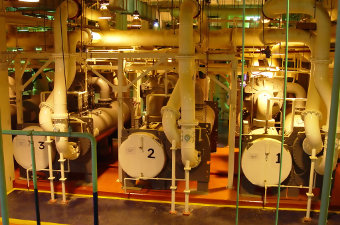Chillers
Last Updated: 02/07/25
Chillers typically cool water, which is then circulated to provide comfort cooling throughout a building or other location. Chillers can be classified by compressor type, including centrifugal, reciprocating, screw, and scroll.
 Product Details
Product Details
To the maximum extent practicable, federal agencies are required to buy sustainable products, which are products that meet the purchasing program(s) listed below.
If there is more than one program listed below, agencies are directed to prioritize multi-attribute products, which meet statutory purchasing program requirements (![]() ) and one or more required Environmental Protection Agency purchasing programs.
) and one or more required Environmental Protection Agency purchasing programs.
Review our frequently asked questions for more information.
|
Product Type
|
Procurement Info
|
Where to Buy
|
|---|---|---|
| Air-Cooled Chillers | ||
| Water-Cooled Chillers | ||
| Refrigerants |
 Legal Requirements
Lists federal requirements related to the purchase of this item, including applicable Federal Acquisition Regulation (FAR) requirements
Legal Requirements
Lists federal requirements related to the purchase of this item, including applicable Federal Acquisition Regulation (FAR) requirements
 Life Cycle Cost Savings
Life Cycle Cost Savings
Life Cycle Costing (LCC) aims to quantify the financial impact of a product over its entire life cycle to assist consumers in making decisions that will save them money over the long term.
An efficient product is cost effective when the utility costs saved over the life of the product exceed the additional upfront cost (if any) of the more efficient model. Federal purchasers may assume that Energy Star-qualified products and products meeting FEMP-designated efficiency requirements are life-cycle cost effective. However, users wishing to determine cost effectiveness for their application may do so using the cost effectiveness examples on FEMP's product web pages![]() .
.


 FEMP
FEMP
 SNAP
SNAP